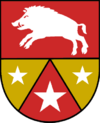New Democracy Act 2022: Difference between revisions
Jump to navigation
Jump to search
mNo edit summary |
mNo edit summary |
||
| Line 15: | Line 15: | ||
Notable provisions of the New Democracy Act include: | Notable provisions of the New Democracy Act include: | ||
*Reorganization of the [[Constituencies of Littland]] and that they will be redrawn every 15 years to match population changes. | *Reorganization of the [[Constituencies of Littland]] and that they will be redrawn every 15 years to match population changes. | ||
* | *Reduced electoral threshold from 4% to 1%, making it considerably easier for smaller parties to get representation | ||
*Requiring voters to provide photo identification when voting. | *Requiring voters to provide photo identification when voting. | ||
*Introduced restrictions on third-party donations for campaign spending, referring parties to a greater expanded pool of tax money for campaigning. | *Introduced restrictions on third-party donations for campaign spending, referring parties to a greater expanded pool of tax money for campaigning. | ||
Revision as of 20:44, 24 November 2022
| New Democracy Act | |
|---|---|
 | |
| Parliament of Littland | |
| An Act to make appropriate changes to the electoral institutions to increase voter participation in Littish democracy | |
| Territorial extent | Littland |
| Enacted by | Parliament of Littland |
| Date passed | 2 December 2022 |
| Status: Current legislation | |
The New Democracy Act 2022 (NDA22 or New Democracy Act, for short) is an act of the Littish Parliament that reorganized the constituencies of Littland and made considerable changes to how seats in the parliament are distributed. It was proposed by MF Jakob Albertsen (Labour) and passed on 2 December 2022. It had a large impact on how the 2023 Littish parliamentary election was conducted.
Provisions
Notable provisions of the New Democracy Act include:
- Reorganization of the Constituencies of Littland and that they will be redrawn every 15 years to match population changes.
- Reduced electoral threshold from 4% to 1%, making it considerably easier for smaller parties to get representation
- Requiring voters to provide photo identification when voting.
- Introduced restrictions on third-party donations for campaign spending, referring parties to a greater expanded pool of tax money for campaigning.
- Increased digitalization of election process, such as larger election material being required to be available online.
Reception
The act was greatly praised for its increased voter participation with changes to the constituencies and seat distribution while also being criticized for the photo identification change, as the only government issued identification with photo was the passport.
